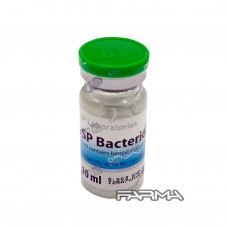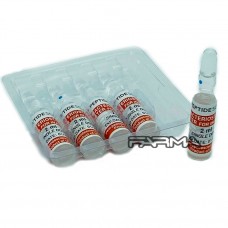Bacteriostatic water is a type of sterile water that contains a bacteriostatic agent, typically benzyl alcohol or parabens, which inhibits the growth of bacteria in the water. It is commonly used in healthcare settings, laboratories, and pharmaceutical compounding to reconstitute medications, dilute injections, and facilitate the storage of certain medications. Understanding the composition, uses, and considerations of bacteriostatic water is essential for ensuring its safe and effective use in various applications.
Composition:
-
Sterile Water : Bacteriostatic water is composed of sterile water, which has been filtered and purified to remove impurities and microorganisms.
-
Bacteriostatic Agent : The key component of bacteriostatic water is the bacteriostatic agent, which prevents the growth and reproduction of bacteria in the water. Common bacteriostatic agents include benzyl alcohol and parabens, which are added to the water in specific concentrations to maintain its sterility over time.
Uses of Bacteriostatic Water:
-
Medication Reconstitution : Bacteriostatic water is commonly used to reconstitute powdered medications, particularly those that are unstable in solution or require dilution before administration. By adding bacteriostatic water to the medication vial, healthcare providers can create a solution suitable for injection while maintaining sterility.
-
Injection Dilution : Bacteriostatic water may be used to dilute injectable medications or solutions to achieve the desired concentration for administration. This is particularly common in clinical settings where precise dosing is required or when medications need to be administered over an extended period.
-
Laboratory and Research Applications : Bacteriostatic water is used in laboratory and research settings for various purposes, including the preparation of culture media, reconstitution of lyophilized reagents, and dilution of samples for analysis.
-
Medication Storage : Certain medications, particularly those in multi-dose vials, may require storage with a bacteriostatic agent to prevent bacterial contamination and maintain stability over time. Bacteriostatic water provides an effective medium for storing medications while inhibiting bacterial growth.
Considerations for Bacteriostatic Water Use:
-
Concentration of Bacteriostatic Agent : The concentration of the bacteriostatic agent in bacteriostatic water can vary depending on the intended use and manufacturer's specifications. Healthcare providers should ensure that the concentration is appropriate for the intended application to maintain sterility and minimize the risk of adverse effects.
-
Compatibility with Medications : Not all medications are compatible with bacteriostatic water or its additives. Healthcare providers should consult medication-specific guidelines and package inserts to determine the appropriate diluent for reconstitution or dilution of each medication.
-
Storage Conditions : Bacteriostatic water should be stored in a cool, dry place away from direct sunlight and heat. Once opened, multi-dose vials should be used within the specified timeframe to minimize the risk of bacterial contamination.
-
Aseptic Technique : When using bacteriostatic water for medication reconstitution or dilution, healthcare providers should adhere to strict aseptic technique to prevent contamination and ensure patient safety. This includes proper hand hygiene, use of sterile equipment, and appropriate disposal of unused portions.
Conclusion: Bacteriostatic water is a sterile water solution containing a bacteriostatic agent that inhibits the growth of bacteria. It is commonly used in healthcare settings, laboratories, and pharmaceutical compounding for medication reconstitution, injection dilution, and storage. Understanding the composition, uses, and considerations of bacteriostatic water is essential for ensuring its safe and effective use in various applications, thereby contributing to patient safety and quality of care.


